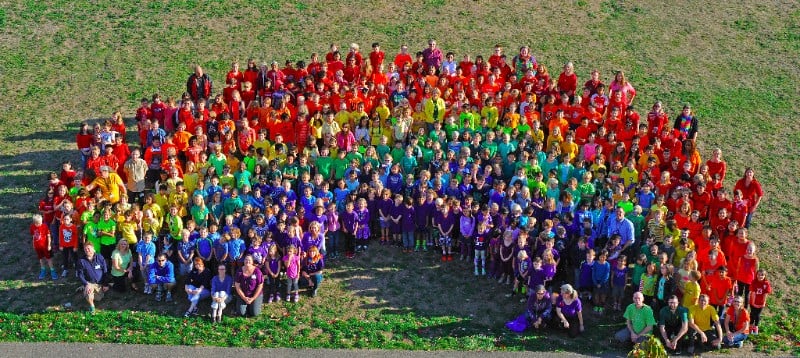The 30 Best Elementary Schools in Virginia: Rankings and Academic Guide
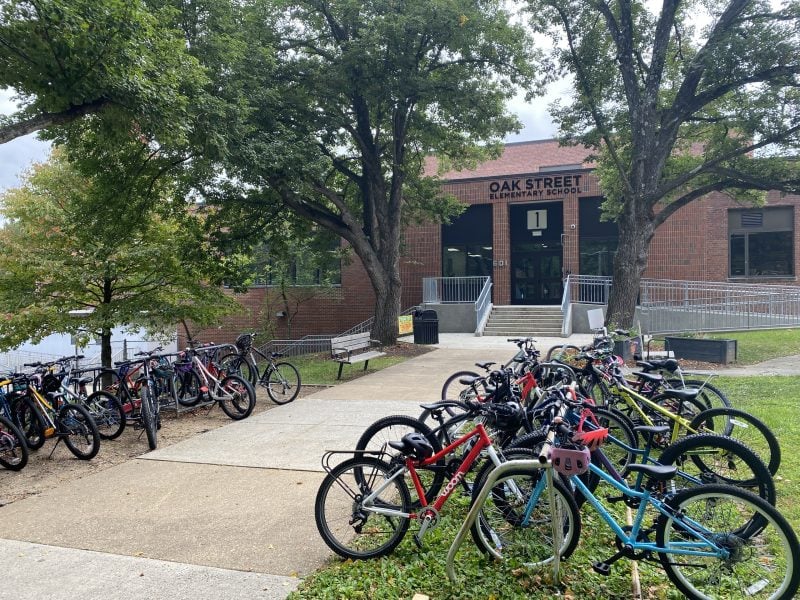
Virginia consistently ranks among the top states for educational excellence, with its elementary schools serving as the foundation for academic achievement throughout the Commonwealth.
The state’s commitment to quality education is reflected in its diverse array of outstanding elementary institutions that serve communities from Northern Virginia’s suburbs to the Tidewater region.
Parents seeking the highest-performing elementary schools in Virginia will find exceptional options across multiple counties, with many institutions demonstrating superior academic outcomes, innovative teaching approaches, and strong community support.
These schools represent various districts and geographic areas, offering families numerous choices for quality elementary education. The selection process involves careful evaluation of academic performance metrics, school culture, and educational resources that contribute to student success.
Here are the 30 best elementary schools in Virginia:
1. Oak Street Elementary School, Falls Church
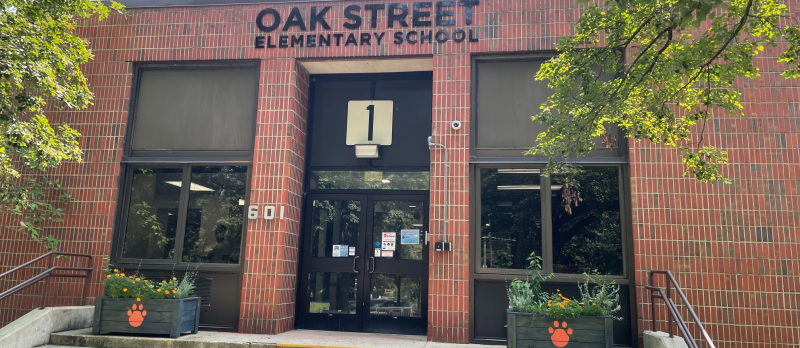
Formerly, Thomas Jefferson Elementary School, Oak Street serves grades 2-5 in Falls Church City Public Schools District. The school enrolls 760 students with a student-teacher ratio of 15 to 1.
Located at 601 South Oak Street, the school operates within Falls Church City’s highly regarded public school system. The district invests $17,946 per student annually.
Oak Street Elementary has established itself as a quality educational institution in northern Virginia. The school benefits from Falls Church’s commitment to academic excellence and small class sizes.
The Falls Church City school district maintains strong academic standards across all grade levels. Students at Thomas Jefferson Elementary receive instruction in core subjects with additional enrichment opportunities.
The school’s central Falls Church location provides easy access for families throughout the community. Oak Street Elementary continues to serve as an important educational foundation for elementary students in the area.
2. Colvin Run Elementary School, Vienna
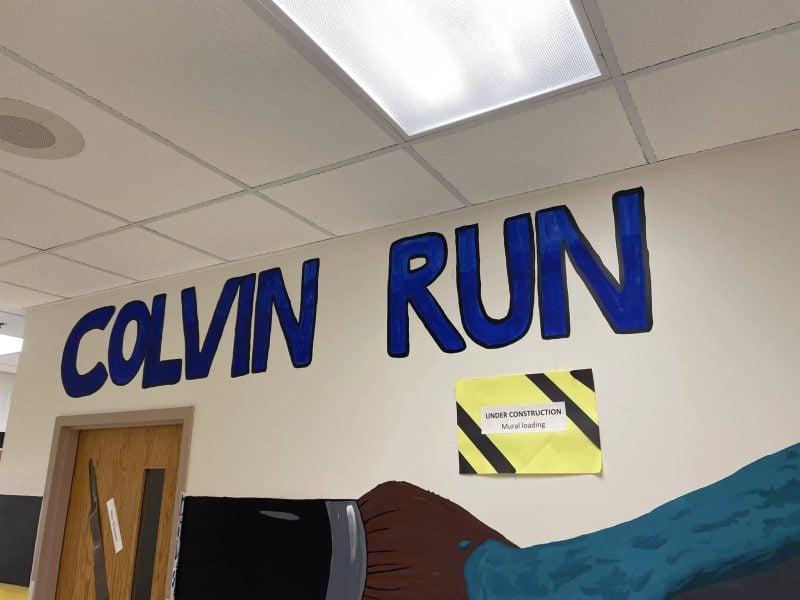
Colvin Run Elementary School ranks within the top 1% of all public schools in Virginia. The school serves 766 students in grades prekindergarten through sixth grade.
Located in Vienna, Colvin Run Elementary operates within the Fairfax County Public Schools district. The school maintains a student-to-teacher ratio of 14.7 to 1.
The school has consistently ranked among the top 30 elementary schools in Virginia for several years. Student subgroups including female, male, Asian, White, multi-racial, and disabled students all rank among the top 25 statewide in their respective categories.
Colvin Run Elementary offers a Gifted & Talented program for qualifying students. The school also provides two sports programs for student participation.
The school is situated at 1400 Trap Road in Vienna, Virginia. It operates in a large suburban setting within Fairfax County.
3. Sangster Elementary School, Alexandria
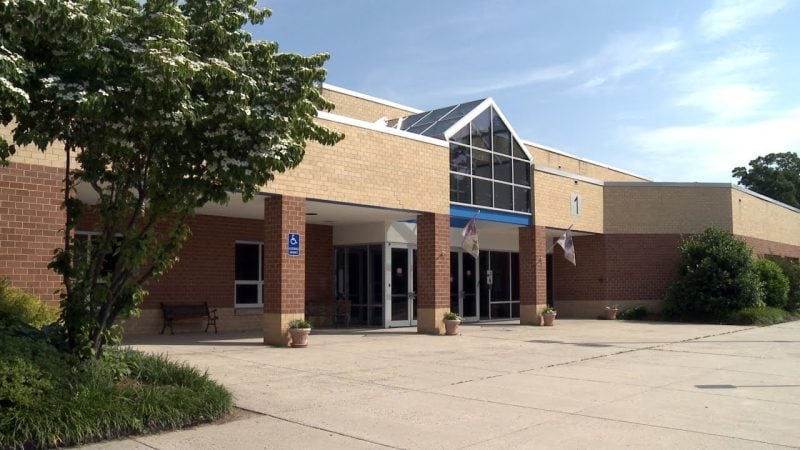
Sangster Elementary School stands as one of Virginia’s top-performing educational institutions. The school ranks within the top 1% of all public schools in Virginia.
Located in Springfield, the school serves 925 students in grades prekindergarten through sixth. It operates within the Fairfax County Public Schools district.
The school consistently ranks among the top 2-4 elementary schools in Virginia. It has earned a 5-star rating from SchoolDigger for its academic excellence.
Sangster Elementary offers a Gifted & Talented program for advanced learners. This specialized program enhances the educational experience for high-achieving students.
The school maintains its exceptional status through strong academic performance and comprehensive programming. Its reputation attracts families seeking quality elementary education in the Northern Virginia region.
4. Old Donation School, Virginia Beach

Old Donation School stands as a highly rated public magnet school serving grades 2-8 in Virginia Beach. The school maintains a student population of approximately 1,335 to 1,345 students with a student-teacher ratio of 16 to 1.
Academic performance at Old Donation School reaches exceptional levels. According to state test scores, 99% of students achieve proficiency in both math and reading.
The school operates as a specialized institution for gifted students. Admission requires students to first be identified for gifted services within Virginia Beach City Public Schools before consideration for enrollment.
Old Donation School benefits from Virginia Beach City Public Schools’ strong commitment to arts education. The district has received the Best Communities for Music Education designation from The National Association of Music Merchants Foundation for the 16th time.
5. Fox Mill Elementary School, Oak Hill
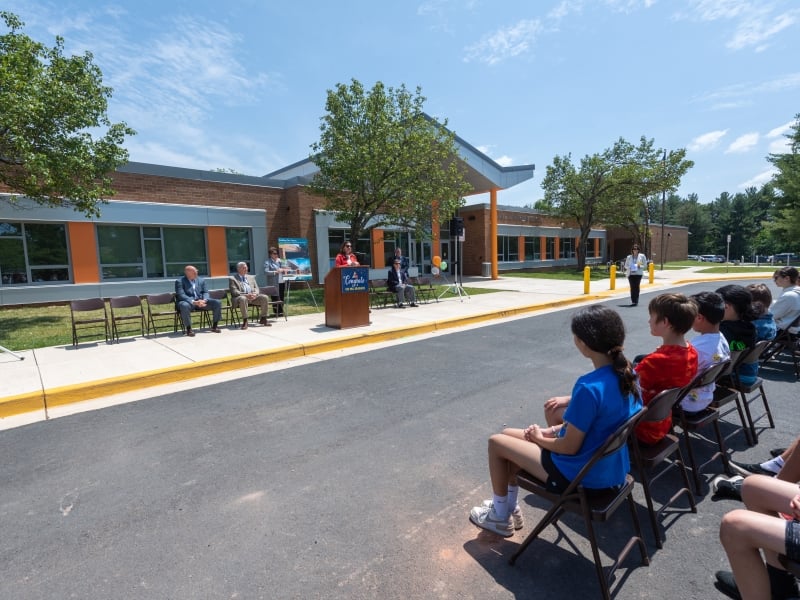
Fox Mill Elementary School serves 645 students in prekindergarten through sixth grade in Herndon, Virginia. The school operates within the Fairfax County Public Schools district.
This institution ranks within the top 10% of all public elementary schools in Virginia. Fox Mill functions as a magnet school specializing in Gifted and Talented programs.
The school has earned a GreatSchools rating of 7 out of 10 based on various quality measures. Students benefit from specialized programming designed for advanced learners.
Fox Mill Elementary is located in the 20171 zip code area, which contains several high-performing educational institutions. The school stands among the top-ranked elementary schools in both Herndon and Fairfax County.
The Gifted and Talented magnet program attracts families seeking advanced academic opportunities for their children.
6. Mosaic Elementary School, Fairfax
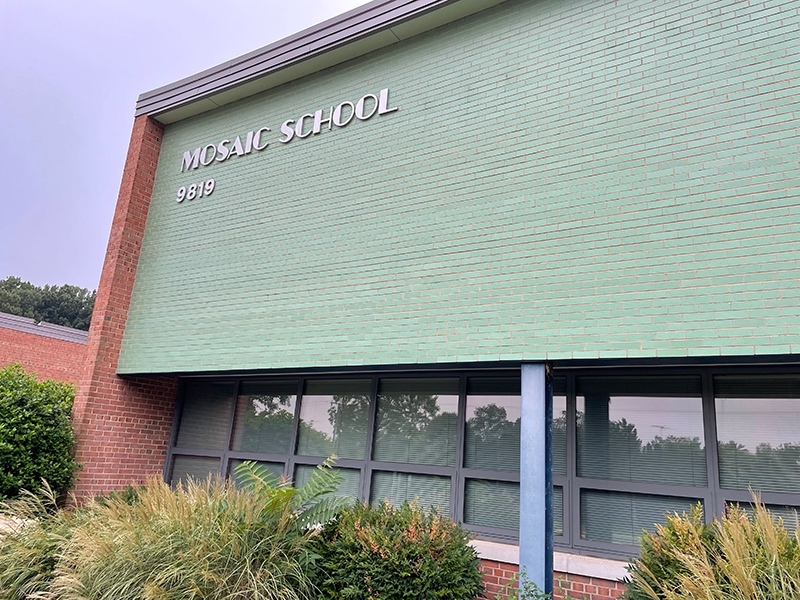
Mosaic Elementary School serves students in kindergarten through fifth grade in Fairfax County. The school operates within the Fairfax County Public Schools district, which ranks among Virginia’s top-performing school systems.
The school focuses on providing comprehensive academic programs that meet diverse student needs. Teachers use research-based instructional methods to support student achievement across core subjects.
Mosaic maintains smaller class sizes that allow for more individualized attention. The school offers various enrichment programs including art, music, and physical education.
The facility includes modern classrooms, a library media center, and specialized learning spaces. Technology integration supports classroom instruction and student learning.
Parent involvement plays an active role in school activities and programs. The school maintains regular communication with families about student progress and school events.
Mosaic Elementary participates in district-wide assessments and follows Virginia’s Standards of Learning curriculum guidelines.
7. Glen Forest Elementary School, Fairfax
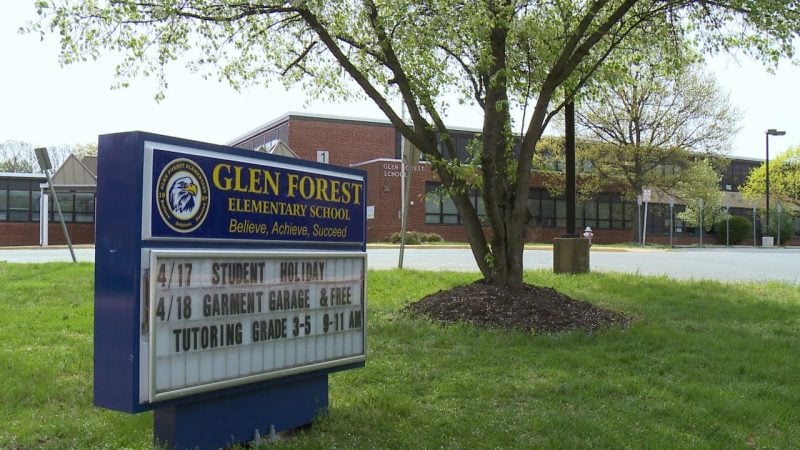
Glen Forest Elementary School serves 790 students in grades prekindergarten through 5 in Falls Church, Virginia. The school operates within the Fairfax County Public Schools district, which ranks 41st out of 130 districts statewide.
The school maintains a student-to-teacher ratio of 12.6 to 1. Glen Forest offers a Gifted and Talented program for qualifying students.
The student population is diverse, with 46.38% Hispanic enrollment. This represents a higher percentage than many surrounding schools in the area.
Glen Forest Elementary participates in the Title I program. The school provides various educational resources and support services for its student body.
Located in Falls Church, the school serves families in the designated attendance zone. Parents can access detailed information about academic performance and programs through Virginia’s School Quality Profiles system.
8. Stonehouse Elementary School, Williamsburg
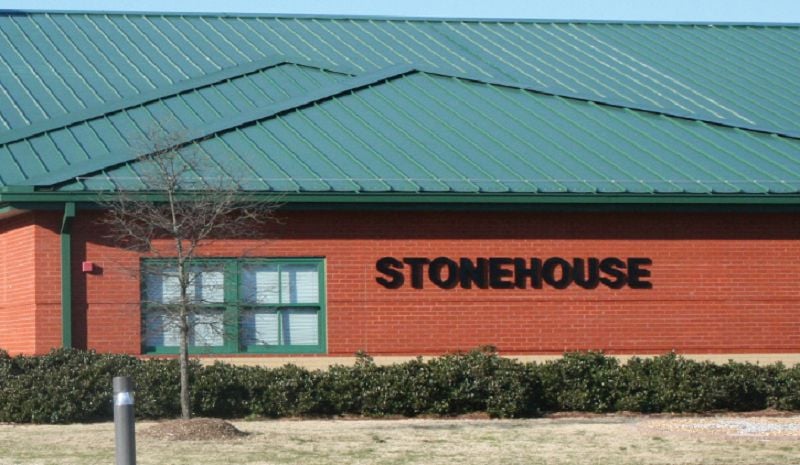
Stonehouse Elementary School serves students in the historic Williamsburg area of Virginia. The school is part of the Williamsburg-James City County Public Schools district.
Located in one of Virginia’s most historically significant regions, the school provides education to elementary-age students. The campus sits near colonial Williamsburg and other historic sites.
The school follows Virginia’s Standards of Learning curriculum requirements. Students receive instruction in core subjects including mathematics, reading, science, and social studies.
Stonehouse Elementary participates in district-wide programs and initiatives. The school works within the broader educational framework established by Williamsburg-James City County Public Schools.
The facility serves families in the Jamestown and surrounding Williamsburg communities. Transportation services are available for eligible students within the designated attendance zone.
9. Stafford Elementary School, Stafford
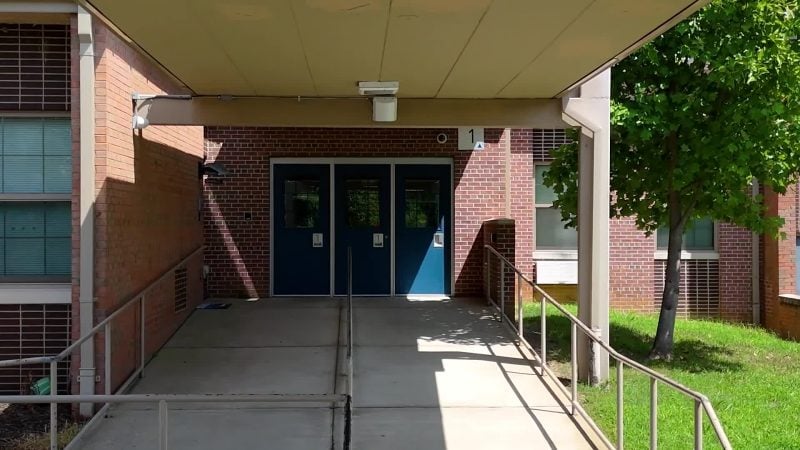
Stafford Elementary School serves students in Stafford County, Virginia. The school operates within the Stafford County Public Schools district system.
Located in the northern Virginia region, Stafford Elementary provides educational services to families in the Stafford area. The school follows Virginia’s state curriculum standards and guidelines.
Stafford County Public Schools includes multiple elementary institutions serving the local community. Stafford Elementary is one of the district’s schools offering primary education programs.
The school participates in Virginia’s standardized testing requirements. Students receive instruction in core academic subjects including reading, mathematics, science, and social studies.
Stafford Elementary maintains standard elementary school operations with regular school hours and academic calendar. The facility serves kindergarten through fifth grade students in the Stafford County area.
Parents in the Stafford community have access to Stafford Elementary as part of the public school options available through the district system.
10. Wolftrap Elementary School, Vienna
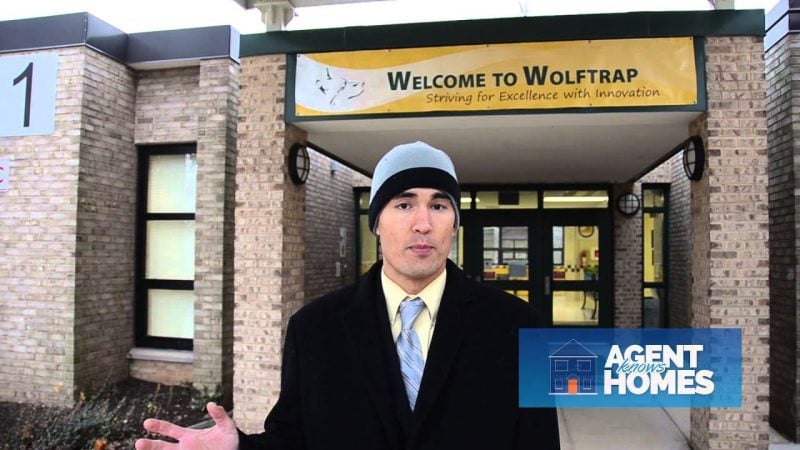
Wolftrap Elementary School ranks within the top 1% of all public schools in Virginia. The school holds the #4 position among Virginia elementary schools based on state test performance and student preparation metrics.
Located in Vienna, the school serves approximately 550 students from prekindergarten through 6th grade. It operates as part of the Fairfax County Public Schools district system.
The school maintains a student-to-teacher ratio of 16.7 to 1. This ratio supports individualized attention and academic support for students across all grade levels.
Wolftrap Elementary offers a Gifted & Talented program for qualifying students. The school consistently demonstrates exceptional academic performance on state-required assessments.
The diverse student population benefits from comprehensive educational programming. Wolftrap Elementary is one of 169 elementary schools within the Fairfax County Public Schools network.
11. Mount Vernon Woods Elementary School, Alexandria
Mount Vernon Woods Elementary School serves students in prekindergarten through sixth grade in Alexandria, Virginia. The school operates within the Fairfax County Public Schools district.
The school enrolls approximately 546 to 574 students. It maintains a student-to-teacher ratio of 10.9 students per teacher.
Mount Vernon Woods Elementary offers a Gifted and Talented program for qualifying students. This specialized program provides enhanced educational opportunities within the regular school setting.
The school is located at 4015 Fielding Street in Alexandria. It functions as one of 169 elementary schools operating within the Fairfax County Public Schools system.
Fairfax County Public Schools ranks 41st out of 130 school districts in Virginia. Mount Vernon Woods Elementary participates in this larger district framework while serving its local Alexandria community.
12. Arlington Traditional
Arlington Traditional School, located in Arlington, Virginia, is a highly respected public elementary school known for its rigorous academics and structured learning environment.
Serving students in kindergarten through fifth grade, the school is part of Arlington Public Schools and consistently ranks among the top-performing schools in the region.
Arlington Traditional emphasizes core academic excellence in reading, math, science, and writing, while also fostering discipline, responsibility, and respect.
The school follows a traditional model with a strong focus on character education, homework accountability, and high behavioral expectations. Parents appreciate the school’s dedicated staff, clear communication, and strong sense of community.
With a diverse student body and supportive environment, Arlington Traditional creates a safe and challenging space where students are prepared for future academic success. It remains a top choice for families seeking a high-quality, structured elementary education in Northern Virginia.
13. Parklawn Elementary School, Arlington
Parklawn Elementary School serves a diverse student population from 33 countries who speak 30 different languages. The school is located in Alexandria and operates within the Fairfax County Public Schools system.
The school offers a Gifted and Talented program for qualifying students. It is one of 169 elementary schools in the Fairfax County district.
Parklawn Elementary focuses on providing quality education to its multicultural student body. The school emphasizes creating an inclusive learning environment that accommodates students from various cultural backgrounds.
The institution serves as part of a larger network of Virginia elementary schools. Parents can access detailed information about the school through Virginia’s School Quality Profiles system.
Parklawn Elementary maintains its commitment to academic excellence while supporting the diverse needs of its international student community.
14. Vienna Elementary School, Vienna
Vienna Elementary School serves 377 students in grades prekindergarten through sixth. The school maintains a student-teacher ratio of 13 to 1.
State test scores show strong academic performance. 87% of students demonstrate proficiency in reading, while 72% achieve proficiency in math.
The school ranks within the top 20% of all public schools in Virginia. It operates as part of the Fairfax County Public Schools district, which includes 169 elementary schools total.
Vienna Elementary offers a Gifted and Talented program for advanced learners. The school has earned recognition with a 5-star rating from SchoolDigger.
Located in Vienna, Virginia, the school consistently outperforms both district and state averages. Its academic achievements place it among the top elementary schools in the state.
15. Greenbriar West Elementary School, Springfield
Greenbriar West Elementary School ranks within the top 5% of all public schools in Virginia. The school serves 623 students in grades prekindergarten through sixth grade.
Located in Fairfax, the school operates within Fairfax County Public Schools. It maintains a student-teacher ratio of 15 to 1, providing focused attention for learning.
Academic performance demonstrates strong results across core subjects. According to state test scores, 84% of students achieve proficiency in mathematics while 88% reach proficiency in reading.
The school offers specialized programming including a Gifted & Talented program. This enhances educational opportunities for high-achieving students within the district.
Greenbriar West Elementary focuses on creating an inclusive learning environment. The school emphasizes collaboration between staff, students, and families while celebrating diversity and maintaining high academic expectations.
16. Bucknell Elementary School, Reston
Bucknell Elementary School serves students in Reston as part of the Fairfax County Public Schools district. The school operates within a district ranked 41 out of 130 in Virginia.
The elementary school provides education for students from pre-kindergarten through fifth grade. It participates in the standard Fairfax County academic calendar and curriculum requirements.
Bucknell Elementary is one of eight elementary schools serving the Reston community. The school offers diverse educational experiences typical of the Fairfax County system.
Students at Bucknell Elementary have access to core academic subjects and supplementary programs. The school maintains standard class sizes and follows district-wide educational policies.
The facility serves families in the surrounding Reston neighborhoods. Parents can access school calendar information and enrollment details through the Fairfax County Public Schools system.
17. Whitman Elementary School, Alexandria
Whitman Elementary School serves students in Alexandria, Virginia as part of the local public school system. The school operates within the Alexandria City Public Schools district.
Located in the 22306 zip code area, Whitman Elementary provides educational services to families in this section of Alexandria. The school follows Virginia state curriculum standards and guidelines.
Alexandria contains 41 elementary schools across two main districts. These schools serve diverse student populations throughout the city.
The school participates in Virginia’s standardized testing programs. Students receive instruction in core academic subjects including mathematics, reading, science, and social studies.
Whitman Elementary maintains typical elementary school grade levels. The facility includes standard classroom spaces and educational resources common to Virginia public elementary schools.
Families in the Alexandria area can access information about enrollment procedures through the Alexandria City Public Schools administrative offices.
18. Charles Barrett Elementary, Alexandria
Charles Barrett Elementary has been a fixture in Alexandria since October 25, 1943, when it opened to serve children in the new Parkfairfax housing development during WWII. Named after Major General Charles D. Barrett, a Marine Corps leader killed in the South Pacific, the school has always been closely tied to its community.
Today, Barrett serves approximately 540–580 students in Pre-K through 5, drawing from a very diverse population, nearly half Hispanic, with sizable White, Black/African American, and Multi-racial representation.
The school has an arts-integrated curriculum, special education supports, EL (English Learner) services, and strong emphasis on social-emotional learning and equity.
Barrett also maintains strong family engagement and community events, like arts nights, math nights, concerts, etc. that reinforce its role as a neighborhood center.
While test scores are mixed, reading tends to outperform math relative to state averages the school is known for its caring staff, smaller class sizes, and academic support for all students.
19. Great Falls Elementary School, Great Falls
Great Falls Elementary School ranks within the top 10% of all public schools in Virginia. The school serves 517 students in grades prekindergarten through sixth grade.
The school operates as a magnet school offering a Gifted & Talented program. It belongs to the Fairfax County Public Schools district, one of Virginia’s highest-performing school systems.
Great Falls Elementary consistently earns recognition for academic excellence. The school has received a 5-star rating from SchoolDigger and ranks among the top elementary schools statewide.
The school is located in Great Falls, Virginia, an affluent community in Fairfax County. Students benefit from the resources and educational opportunities provided by this well-funded district.
Great Falls Elementary stands out among the 169 elementary schools within Fairfax County Public Schools. The combination of specialized programming and strong academic performance makes it a notable institution in Virginia’s elementary education landscape.
20. Bush Hill Elementary School, Alexandria
Bush Hill Elementary School in Alexandria, Virginia, is part of the Fairfax County Public Schools system and serves students in pre-kindergarten through sixth grade.
With an enrollment of around 675 students, the school maintains a favorable student-teacher ratio of approximately 13:1, allowing for more personalized instruction.
The student body is diverse, with a balanced mix of White, African American, Hispanic, Asian, and multiracial students, reflecting the surrounding community. About a quarter of the students are eligible for free or reduced-price lunch, indicating a range of socioeconomic backgrounds.
Academically, Bush Hill performs above the state average on many standardized tests, especially in math.
The school offers a range of programs, including gifted and talented services, and is known for its supportive staff, inclusive environment, and strong parent involvement. With its focus on academic excellence and community values, Bush Hill Elementary remains a solid choice for families in the area.
21. Linton Hall Elementary School, Alexandria
Linton Hall School operates as a private Catholic elementary school in Bristow, Virginia. The institution serves students from pre-kindergarten through 8th grade with 295 enrolled students.
The school maintains a student-teacher ratio of 21 to 1. Annual tuition costs $12,840 for the highest grade level offered.
Linton Hall School functions as a ministry of the Benedictine Sisters of Virginia. The educational approach focuses on developing students academically, spiritually, and physically within Catholic faith traditions.
The school emphasizes intellectual excellence, spiritual discovery, and creativity in its curriculum. Environmental awareness and physical development receive equal attention in the educational program.
Students can participate in 11 different sports programs offered by the school. This athletic variety provides opportunities for physical development and team participation across multiple grade levels.
22. Burke School, Fairfax
Burke School serves students in the Fairfax County Public Schools district. The school is located in the Burke area of Fairfax County, Virginia.
Fairfax County Public Schools ranks 41 out of 130 school districts in Virginia. The district receives a 3-star rating overall.
Elementary schools in Fairfax County maintain an average ranking of 8 out of 10. This places them in the top 30 percent of Virginia public elementary schools.
The student body in Fairfax County elementary schools includes 64 percent minority enrollment. Hispanic students represent the majority demographic within this group.
Burke operates within a district known for academic performance above state averages. The school benefits from the resources and educational standards established by Fairfax County Public Schools.
23. Lees Corner Elementary School, Fairfax
Lees Corner Elementary School ranks within the top 10% of all public schools in Virginia. The school serves 592 students in grades prekindergarten through sixth.
Located at 13500 Hollinger Avenue in Fairfax, the school operates within the Fairfax County Public Schools district. The district ranks 41 out of 130 school districts statewide.
The school maintains a student-to-teacher ratio of 14.3 students per teacher. This ratio supports personalized attention and academic support for students.
Lees Corner Elementary offers a Gifted and Talented program for qualified students. The school consistently ranks among the top 20% of Virginia elementary schools.
Students at Lees Corner Elementary perform exceptionally well on state assessments. The school receives an A rating on Niche and a 6 out of 10 rating from GreatSchools.
The school is one of 169 elementary schools operating within the Fairfax County Public Schools system.
24. George Mason Elementary School, Alexandria
George Mason Elementary is a public school serving grades Pre-K through 5. It enrolls around 330-340 students, with a student-teacher ratio of roughly 15:1.
The school’s student population is quite diverse: about 48% White, 39% Hispanic, 7% African American, and smaller percentages of Asian and multiracial students.
Academically, George Mason generally performs above state and district averages in reading and mathematics. For example, in 5th grade math and English reading proficiency, the school has outperformed Alexandria City Public Schools and Virginia state averages.
However, performance among Hispanic students and those from lower socioeconomic backgrounds lags behind the school average, presenting an area for growth.
The school offers a Gifted & Talented program and emphasizes supportive faculty, community involvement, and efforts to improve student outcomes. It maintains a solid reputation among local families who value its strengths while recognizing the need for continued improv
25. Long Branch Elementary School, Fairfax
Long Branch Elementary School serves 423 students in grades Prekindergarten through 5. The school ranks within the top 30% of all public schools in Virginia.
The school has demonstrated success with diverse student populations. One parent noted their bilingual child, who spoke Russian and Uzbek but not English, successfully started kindergarten there in 2015.
Parents describe Long Branch Elementary as an excellent school with caring teachers. The school maintains small class sizes that support individualized attention for students.
The school operates within Fairfax County Public Schools, a district known for strong academic performance. Fairfax County elementary schools average an 8/10 ranking, placing them in the top 30% of Virginia public elementary schools.
Long Branch Elementary has built a reputation for supporting students from various backgrounds. The diverse community contributes to the school’s inclusive learning environment.
26. Mount Daniel School, Falls Church
Mount Daniel Elementary serves grades Pre-K through 2 in the Falls Church City Public Schools district, with about 480-500 students enrolled. The student-teacher ratio is around 19:1, which is a bit higher than ideal but balanced by the school’s resources and strong community backing.
The school is fairly diverse: approximately 65% of students are White, about 15% multiracial, 11% Hispanic, 5-6% Asian, and under 3% African American. Roughly 12-13% of students qualify for free or reduced-price lunch, indicating some economic variety in the student body.
Mount Daniel offers the International Baccalaureate Primary Years Programme, which emphasizes inquiry, global thinking, and student-centered learning.
Academic outcomes are strong; the district consistently ranks among the top in Virginia on Standards of Learning results, especially in reading, science, and history.
Parents often praise Mount Daniel for its caring teachers, early childhood focus, and the solid academic and social foundation it gives students.
27. Beech Tree Elementary School, Fairfax
Beech Tree Elementary School serves 417 students in grades PreK-5 in Falls Church, Virginia. The school operates within the Fairfax County Public Schools district.
The school maintains a student-to-teacher ratio of 13.8 to 1. It offers a Gifted & Talented program for eligible students.
Beech Tree Elementary stands out for its diverse student population. The school has a significantly higher percentage of Hispanic students compared to nearby schools in the district.
The school ranks within the bottom 50% of all public elementary schools in Virginia. Academic performance presents challenges, particularly with student subgroup disparities.
As one of 169 elementary schools in Fairfax County Public Schools, Beech Tree Elementary provides standard district programming. The school continues to serve its diverse community despite facing academic performance challenges.
28. Braddock Elementary School, Fairfax
Braddock Elementary School serves 920 students in prekindergarten through fifth grade in Annandale, Virginia. The school operates as a magnet school within Fairfax County Public Schools, offering a specialized Gifted and Talented program.
The school maintains a student-teacher ratio of 15 to 1. According to state test scores, 23% of students demonstrate proficiency in math while 34% show proficiency in reading.
Braddock Elementary ranks within the bottom 50% of all public schools in Virginia. The school serves a diverse student population with 64% minority enrollment, primarily Hispanic students.
The school is one of 169 elementary schools in the Fairfax County Public Schools district. Fairfax County elementary schools typically have an average ranking of 8 out of 10, placing them in the top 30% of Virginia public elementary schools.
29. Fort Hunt Elementary School, Alexandria
Fort Hunt Elementary School operates as a magnet school in Alexandria, Virginia, within the Fairfax County Public Schools district. The school specializes in Gifted & Talented programs for its students.
The school serves 573 students across grades prekindergarten through sixth. It maintains a student-teacher ratio of 14 to 1, providing focused attention for learning.
Fort Hunt Elementary ranks within the top 50% of all public schools in Virginia. Academic performance shows 73% of students achieving proficiency in reading and 55% reaching proficiency in mathematics.
The school stands among the top-ranked elementary schools in the 22308 zip code area. It competes academically with other well-regarded schools like Waynewood Elementary and Stratford Landing Elementary.
Fort Hunt Elementary’s magnet school status and specialized programming contribute to its academic reputation in northern Virginia.
30. Randolph Elementary School, Arlington
Randolph Elementary serves students in pre-kindergarten through 5th grade, with an enrollment of approximately 396 students. The school maintains a low student-teacher ratio of around 9 to 1, allowing for more individualized attention and support.
The student body is highly diverse. About 58% of students are Hispanic, 16% African American, 14% White, 8% Asian, and roughly 4% identify as two or more races.
Approximately 70% of students are eligible for free or reduced-price lunch, indicating a high level of economic need within the community.
Randolph Elementary offers the International Baccalaureate Primary Years Programme, which emphasizes inquiry-based learning, international-mindedness, and academic exploration.
While standardized test scores are below state averages in reading and math, the school is praised for its dedicated staff, inclusive culture, and supportive learning environment that fosters growth, resilience, and community connection for every student.
Understanding Elementary School Rankings in Virginia
Virginia elementary school rankings rely on multiple data sources including federal statistics, state test scores, and community reviews to evaluate over 1,100 schools across the state. These comprehensive assessments examine academic performance, teaching quality, and school culture to help families identify top-performing institutions.
Methodology Used for School Evaluations
Rankings combine data from the U.S. Department of Education with millions of student and parent reviews to create comprehensive school assessments. Organizations like Niche, U.S. News, and SchoolDigger analyze key statistics using different weighting systems for various factors.
Primary ranking factors include:
- State standardized test scores
- Student-teacher ratios
- Teacher quality and retention rates
- Student diversity metrics
- Overall school district performance
SchoolDigger tracks 1,114 Virginia elementary schools using primarily academic achievement data. U.S. News focuses heavily on federal performance statistics, while Niche incorporates more community feedback and cultural factors.
Different ranking systems produce varying results because each organization prioritizes different metrics. Some emphasize test scores more heavily, while others give equal weight to parent satisfaction and school climate indicators.
Academic Performance and Student Outcomes
Test scores serve as the foundation for most Virginia elementary school rankings, with reading and mathematics assessments carrying the most weight. Schools consistently performing above state averages typically receive higher rankings across all major evaluation platforms.
Student-teacher ratios significantly impact rankings, with most top-performing schools maintaining ratios below the state average. Research shows smaller class sizes often correlate with better individual attention and improved learning outcomes.
Key academic indicators measured:
- Reading proficiency rates – Percentage of students meeting grade-level standards
- Math achievement scores – Performance on state-mandated assessments
- Student growth metrics – Year-over-year improvement tracking
- Achievement gap measures – Performance differences among demographic groups
Schools like Arlington Traditional Elementary and Oak Street Elementary consistently rank highly due to strong test performance combined with effective teaching practices. These institutions demonstrate sustained academic excellence across multiple years of data.
Impact of Community and Extracurricular Involvement
School culture and community engagement significantly influence rankings, particularly on platforms that incorporate parent and student feedback. High-performing schools typically feature strong leadership, positive learning environments, and active family participation in school activities.
Teacher morale and retention rates affect school rankings because stable staffing leads to better continuity in instruction and student relationships. Schools with low teacher turnover often maintain more consistent academic programs and stronger school communities.
Community factors affecting rankings:
- Parent involvement in school governance
- Availability of arts and enrichment programs
- School safety and disciplinary climate
- Communication between families and staff
Schools emphasizing diversity and inclusion tend to perform better in comprehensive rankings that consider school climate. These institutions often demonstrate higher student engagement and create more supportive learning environments for all children.
Extracurricular offerings like music, art, and sports programs contribute to overall school ratings by providing well-rounded educational experiences that extend beyond core academics.
Key Factors for Choosing an Elementary School
Parents should evaluate specific aspects of school operations that directly impact their child’s daily learning experience. The most critical considerations include the school’s educational approach, classroom dynamics, and community involvement opportunities.
School Culture and Teaching Philosophy
School culture shapes how children learn and interact daily. Parents should observe hallway displays, student behavior during transitions, and teacher-student interactions during school visits.
Traditional vs. Progressive Approaches:
- Traditional schools emphasize structured learning with clear rules and standardized curricula
- Progressive schools focus on project-based learning and student-centered exploration
- Hybrid models combine both approaches based on subject matter
Teaching philosophy affects homework policies, assessment methods, and classroom management. Some schools prioritize test preparation while others emphasize creative thinking and collaboration.
The school’s mission statement reveals core values. Parents should ask teachers how they handle different learning styles and behavioral challenges.
Discipline policies vary significantly between schools. Some use positive reinforcement systems while others employ more traditional consequences.
Class Sizes and Student Support
Optimal Class Sizes by Grade:
- Kindergarten-2nd grade: 18-20 students maximum
- 3rd-5th grade: 22-25 students maximum
Smaller classes allow teachers to provide individualized attention and identify learning difficulties early. Teachers in larger classes often struggle to address individual student needs effectively.
Support staff availability matters significantly. Schools should have reading specialists, counselors, and special education coordinators readily accessible.
Key Support Services:
- Reading intervention programs for struggling students
- Gifted and talented services for advanced learners
- English language learning support for non-native speakers
- Special education resources for students with disabilities
- Response to Intervention (RTI) programs help identify academic or behavioral concerns before they become serious problems.
- Parent and Community Engagement
Active parent involvement correlates with improved student outcomes. Schools should offer multiple volunteer opportunities and communication channels.
Communication Methods:
- Weekly newsletters or emails
- Parent portal access for grades and assignments
- Regular teacher conferences
- Open-door policies for questions
PTA or PTO organizations indicate strong community investment. These groups often fund enrichment programs, field trips, and educational resources.
Schools with strong community partnerships provide additional learning opportunities. Local business collaborations, museum partnerships, and community service projects enhance education beyond classroom walls.
Transparency in decision-making processes allows parents to understand school policies and changes. Regular school board meetings and principal forums demonstrate commitment to parent input.




